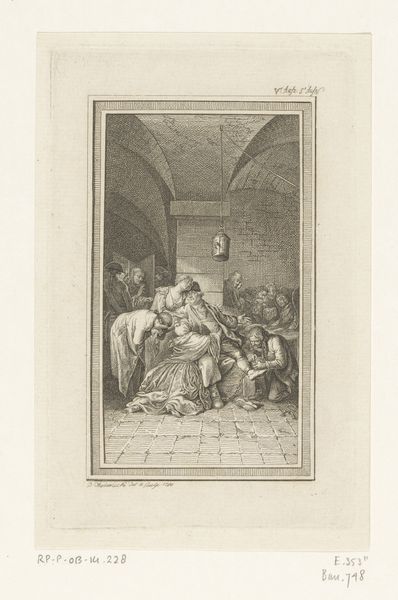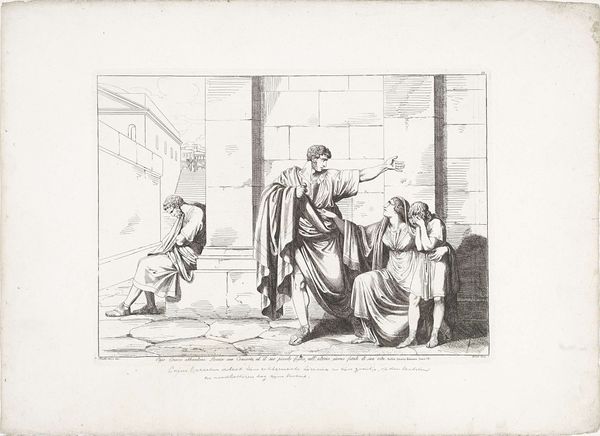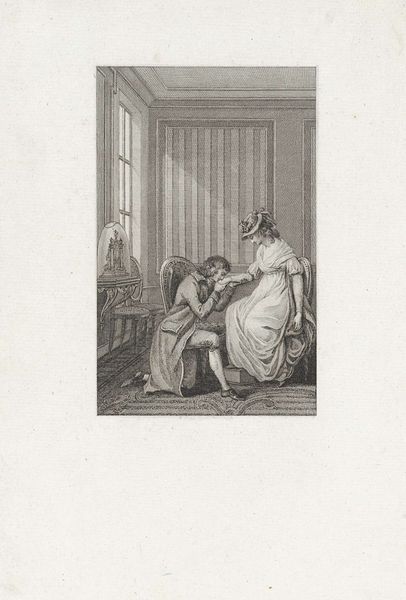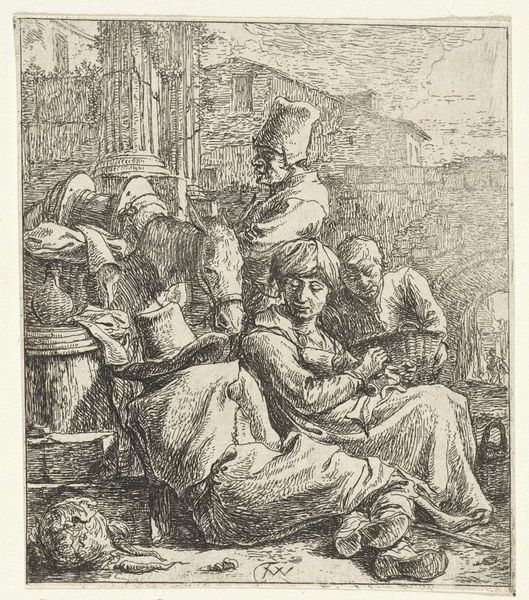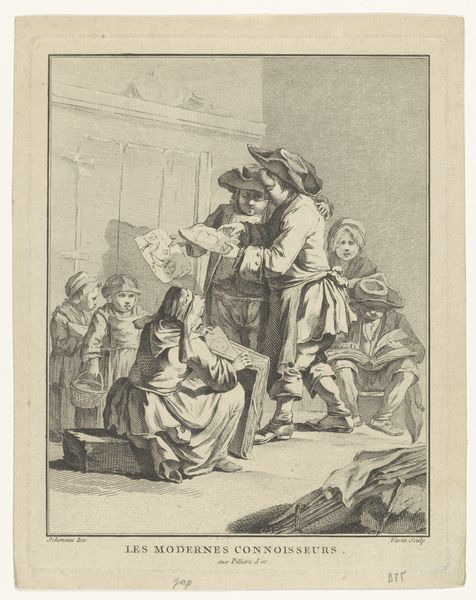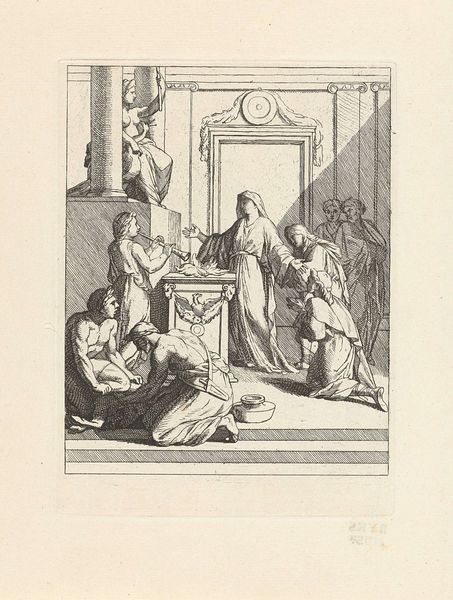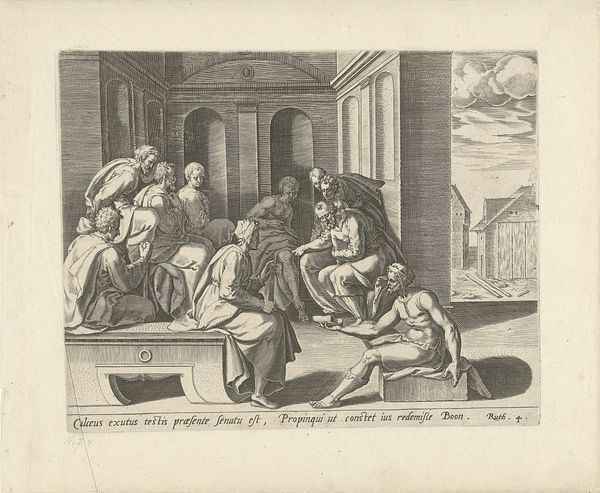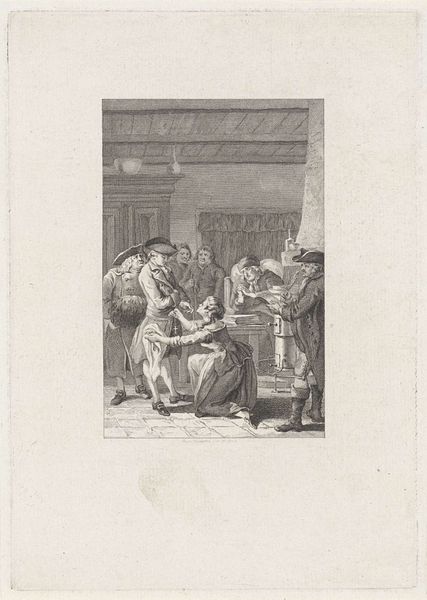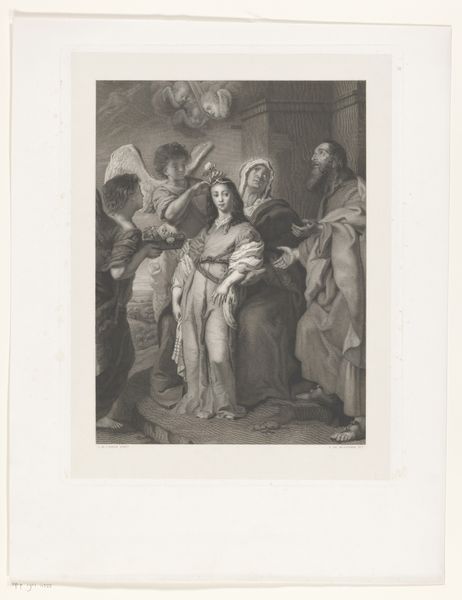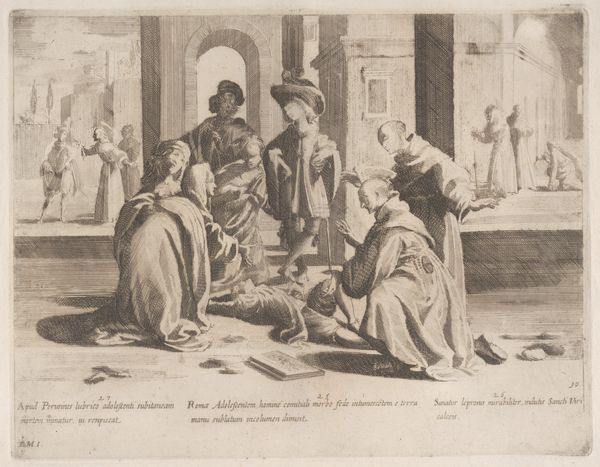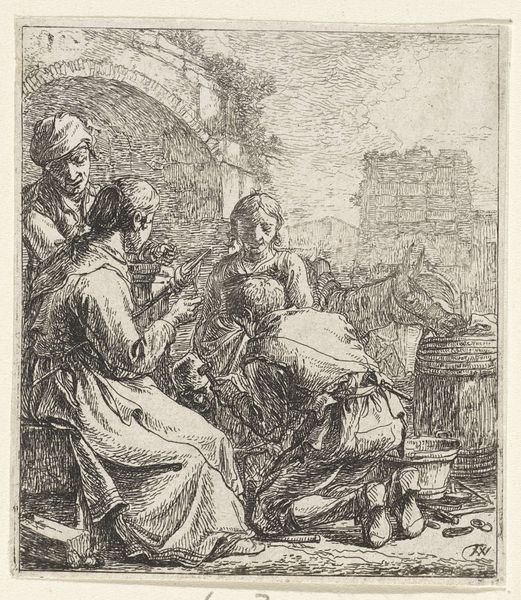
engraving
#
neoclacissism
#
old engraving style
#
figuration
#
line
#
history-painting
#
engraving
Dimensions: height 203 mm, width 138 mm
Copyright: Rijks Museum: Open Domain
Curator: Ludwig Gottlieb Portman created this engraving titled "Moord op Domitianus," or "The Murder of Domitian," around 1805. You can find it here at the Rijksmuseum. Editor: My goodness, it's… intense. The way the figures are piled on top of each other, all those stabbing motions—it’s almost claustrophobic despite being set within a grand, columned space. Curator: Indeed. It depicts the assassination of the Roman Emperor Domitian, a subject that held significant political weight at the time of its creation. Visual depictions of tyranny and resistance were ways of engaging with contemporary struggles for liberty and self-determination during the Napoleonic era. Editor: You can really see that Neoclassical emphasis on line in Portman’s engraving. The lines are so crisp and controlled; look at the sharp delineation of muscles and the folds in their robes. Curator: That linearity speaks to a broader aesthetic of order and reason that aligned with certain political ideologies of the time. The Roman subject matter places the event in a longer history of empire, rebellion, and revolution, ideas of enormous appeal when much of Europe lay in political turmoil. Editor: Even the shading contributes to the drama. There's this stark contrast between light and dark, which further accentuates the violence of the act. And that dagger plunged into Domitian’s neck, it becomes this central focal point around which all the forms swirl. It really emphasizes the immediacy, doesn’t it? Curator: It’s intended to invoke a very strong reaction, linking historical events to current sociopolitical debates about power, morality, and resistance against authority figures. This piece served as a call to consider parallels between then and now. Editor: Thinking about it all, I now view this piece in a new light, especially because the clean lines and balanced composition provide a strange visual appeal amid such gruesome chaos. Curator: I concur, observing these engravings provides an avenue to learn not only about art itself, but additionally social commentary during pivotal eras in history.
Comments
No comments
Be the first to comment and join the conversation on the ultimate creative platform.


